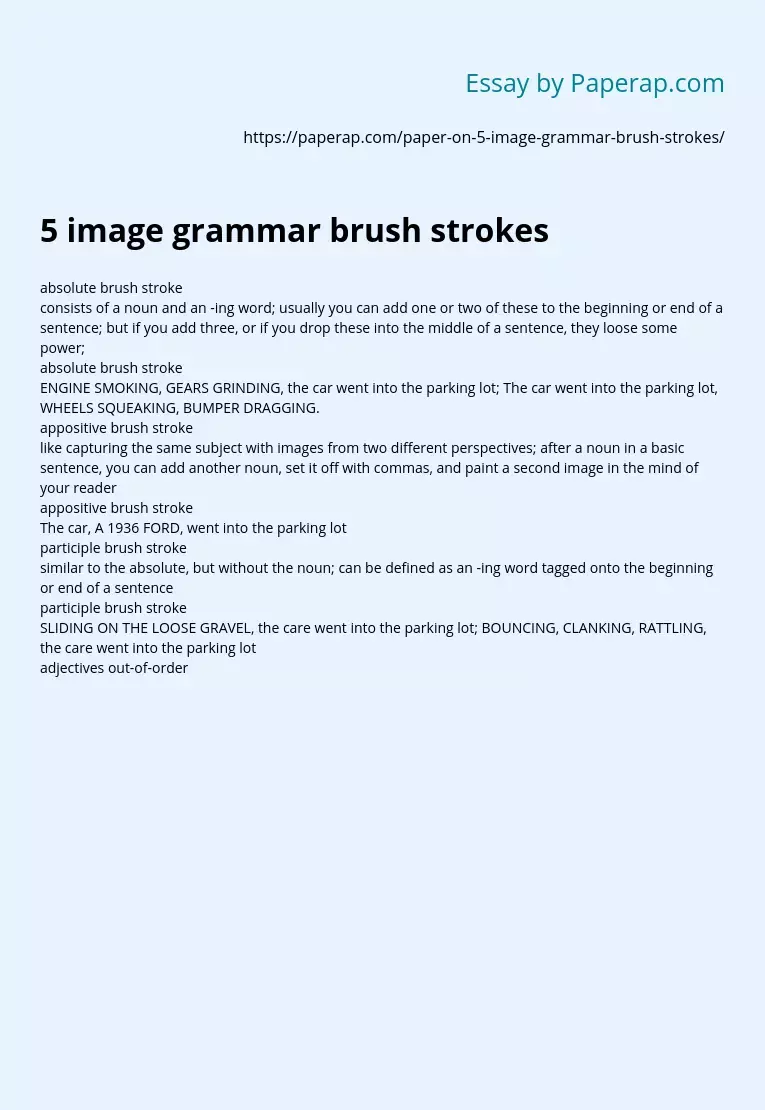5 image grammar brush strokes
Essay,
Pages 1 (247 words)
Views
48
absolute brush stroke
consists of a noun and an -ing word; usually you can add one or two of these to the beginning or end of a sentence; but if you add three, or if you drop these into the middle of a sentence, they loose some power;
absolute brush stroke
ENGINE SMOKING, GEARS GRINDING, the car went into the parking lot; The car went into the parking lot, WHEELS SQUEAKING, BUMPER DRAGGING.
appositive brush stroke
like capturing the same subject with images from two different perspectives; after a noun in a basic sentence, you can add another noun, set it off with commas, and paint a second image in the mind of your reader
appositive brush stroke
The car, A 1936 FORD, went into the parking lot
participle brush stroke
similar to the absolute, but without the noun; can be defined as an -ing word tagged onto the beginning or end of a sentence
participle brush stroke
SLIDING ON THE LOOSE GRAVEL, the care went into the parking lot; BOUNCING, CLANKING, RATTLING, the care went into the parking lot
adjectives out-of-order
two consecutive adjectives are positioned after the noun
adjectives out-of-order
the OLD car, DENTED AND RUSTY, went into the parking lot
action verb brush strokes
often added during the process of revision; replaces being verbs (is, was, were, are, am, and other forms of the verb to be) that freeze the image
action verb brush strokes
The road CURLED around the left side of the barn
5 image grammar brush strokes. (2018, Feb 19). Retrieved from https://paperap.com/paper-on-5-image-grammar-brush-strokes/
